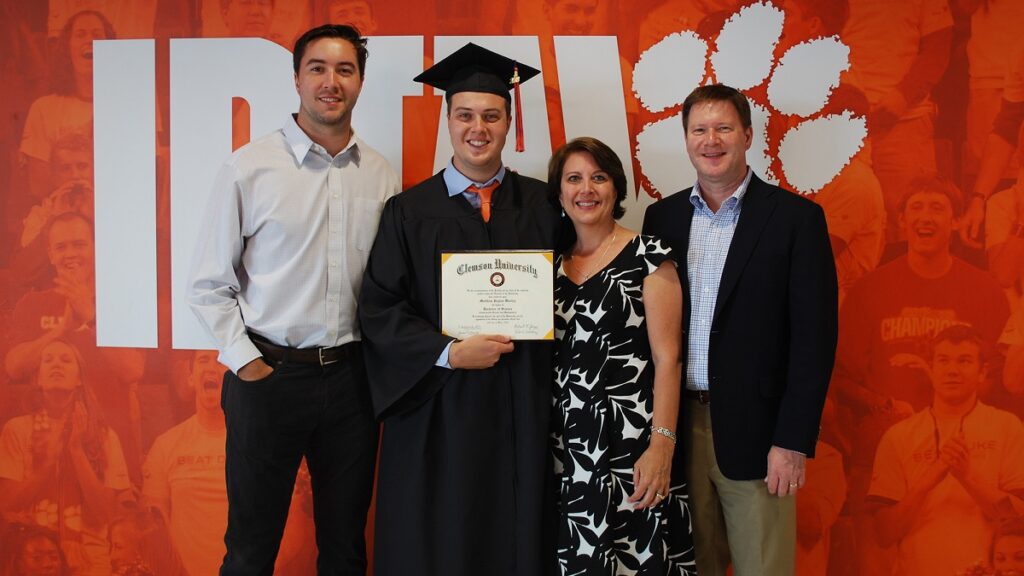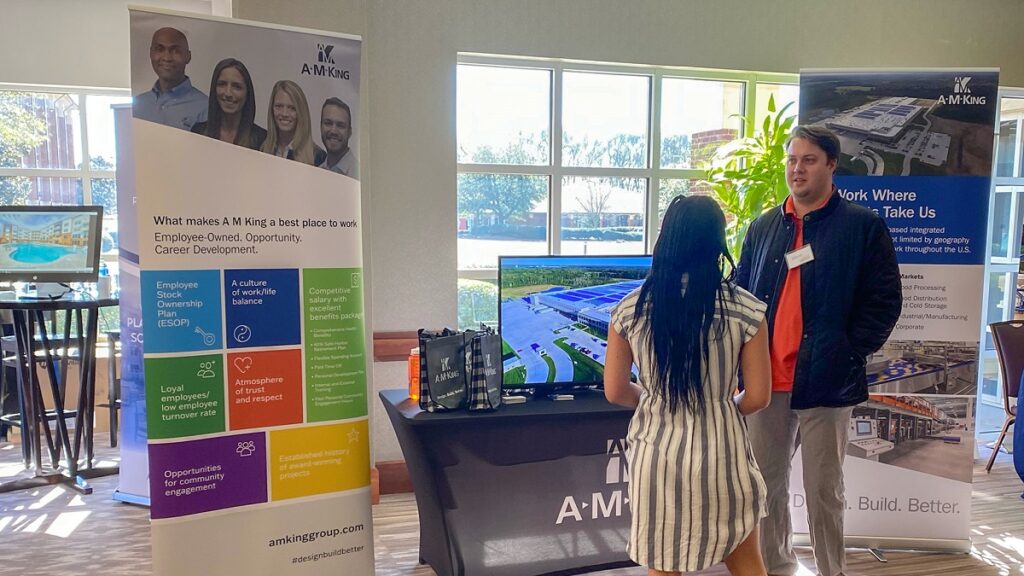
A Career in Design-Build: From Intern to Project Manager
Like many college freshmen, I didn’t have a clue what I wanted to do with my life, and it wouldn’t have occurred to me at that time to pursue a career in Design-Build.
When I was young, growing up in Rock Hill, SC, I do remember liking math and science and thought maybe I could be an engineer. I had plenty of inspiration at home with my dad and mom both holding degrees from UNC Chapel Hill— a Master’s in Accounting and a BS in Psychology, respectively. I took a couple of construction-related courses my first year of college, but I had no experience or much interest in that field of study.
Sometimes, if you’re lucky, you get that lightning bolt moment where everything suddenly becomes very clear. That’s what happened for me when I learned about Design-Build for the first time at Clemson’s Nieri Family Department of Construction Science and Management Career Fair.
A Better Career in Design-Build
I was in the middle of a particularly challenging semester in my sophomore year. I wasn’t really in the mood to dress up and talk with employers that day and if I’m being honest, always felt a little intimidated in those situations anyway. But I was interested in trying to secure an internship with a company in Charlotte.
A M King fit the bill at first glance, and the more I talked with Andre Harris, the more intrigued I became. Andre was quite easy to communicate with and I felt an instant rapport with him. He demystified Design-Build and helped me understand that’s it’s not just an industry buzzword.
I was instantly infatuated with the idea that I would be able to see a project grow from a concept into a completed building or manufacturing space.
The design process is just as interesting to me as the construction process, so to be a part of all of it really called to me. Long story short, I landed the internship with A M King and started the summer before my junior year. I learned what it was like to work with a team, interacting with administration, accounting, HR and my operations team.
It was neat to be a part of such a well-oiled machine and practice writing scopes of work, change orders and contract exhibits. I also worked on select preconstruction tasks for a new project and managed the project closeout process for a job that was wrapping up.
In my second internship the following summer, I was placed on a jobsite near Dallas, TX where A M King was designing and building an athletic training facility for a former NFL star cornerback turned broadcaster. I gained hands-on experience managing subcontractors, the submittal process and safety. I also learned how to manage a 40-hour work week, navigate rush-hour traffic and set daily routines.
These were the ways that the internships provided the perfect segue into a full-time job with A M King post-graduation and a career in Design-Build.
A Full-Time Job Offer

When my senior year rolled around, I was fairly certain A M King would offer me a full-time job as a Project Engineer, and I knew that I would accept if they did. Over the course of only two summers as an intern, I had grown to love the company and the people who worked there, and I knew that my superiors would continue to invest in me.
It was also clear to me that A M King was in a prime position to continue to grow and have remarkable success, and that was something that appealed to me as I pursued a career in Design-Build.
My professors at Clemson did a fantastic job teaching us the skills we needed and by the time I graduated, I felt that I understood the principles of estimating, scheduling, contract documents, and basic project management. When I first started with A M King, I was expected to handle various tasks in preconstruction, construction and closeout.
I received guidance and support from my teammates, but often it is best to learn by being thrown into the fire and find a way to get the job done. About three months after I started, I was selected to assist with preconstruction for Bakkavor’s new bakery in Charlotte. On that job, I was asked to develop a scope of work, put together a conceptual estimate, and obtain and evaluate subcontractor bids.
While my college program prepared me for the tasks associated with project management, there are certain “soft skills” you need that you can only learn through experience.
It quickly became evident that skills alone aren’t very useful if there isn’t proper communication among all of the parties involved in a construction project. A project schedule, for example, is only effective if it is easily understood and can be properly communicated with subcontractors and owners.
Taking It to The Next Level
There are great opportunities for advancement at A M King. When I was promoted to Project Manager, I had only been out of college for a little more than five years. If I thought I was given a lot of responsibility when I first started at the firm, it didn’t compare with my new level of accountability.
In college and early in my career I primarily managed tasks, whereas now I am managing a project team, subcontractors, and client relationships.
A year later, I’m continuing to learn what it really means to be a manager. I’ve studied how to recognize people’s strengths, weaknesses and capacity to help with tasks that need to be accomplished. When working with clients, it’s paramount to understand their goals for a project and how we can assist as a Design-Build team; coming up with creative ways to amplify quality and efficiency in a project.
One of my clients is GE Vernova Greenville. I work with my team to deliver projects more efficiently without sacrificing quality. The goal is to minimize our client’s equipment downtime and assist them in maximizing production. Design-Build is the best strategy for achieving these objectives because we can move forward with construction while continuing to work on design initiatives.

Conclusion
Design-Build is quickly becoming the preferred project delivery method, so pursuing a career in Design-Build is a fantastic opportunity to stay ahead in the construction industry. As a manager, I am able to be involved in the infant stages of a project, and I’ve had the opportunity to give input into the design of a project—precisely, what piqued my interest the most back in 2015 when I attended that first career fair.
I can see myself in the students who approach us, asking questions. I never imagined that just a few years later I would be running projects at GE. I feel fortunate to have been able to follow my passion and have the opportunity to share my experience with young people trying to make their way in the world too.
I’ve learned that it’s not what a business does, but how they operate that’s important. A M King has a unique perspective about Design-Build, but it’s also an employee-owned company where community engagement flourishes, co-workers provide guidance, and opportunities are earned in an environment that allows me to grow and thrive and be somebody that others look up to.

About the Author – Matt Worley, Project Manager, graduated with a degree in Construction Science Management from Clemson University in 2018. For A M King, he is currently managing diverse projects for GE Vernova in Greenville, South Carolina.
This article originally appeared as the February 2024 blog on A M King’s website. Reprinted with permission.






